- Platform
WEBCON BPS
Low-code Application Development Platform
- Solutions
- Why WEBCON
Why WEBCON?
Learn about key, powerful differentiators



Why we're better >
Alternative to >
Customer reviews >
Market reports >
- Pricing
- Resources
WEBCON Academy >
Discover our complex training program
Community >
Exchange experiences and ideas with WEBCON users from around the world
- About
Book a demo >
Schedule a meeting with our expert to explore WEBCON
Get a 30-day trial >
Try now for free & see if we're the right fit
Go freemium >
30 days won't cut it? Check out the freemium version
Looking for an alternative
to Nintex?


| Nintex | WEBCON BPS | |
|---|---|---|
| Modifying a live application | Cancel/restart your live workflows or let them finish the old way | InstantChange™ – your in-flight workflows adapt immediately |
| Application lifecycle management | Workflow/forms are versioned but not moved between environments; data is not part of your application and changes to data will break it | The entire application – workflow, forms, reports, dashboards, data schema, connections to external data – can be packaged and deployed (and updated) from development to test to production |
| On-premises & Cloud | 
   Three separate and incompatible offerings | One platform that runs on-premises, cloud IaaS, and SaaS offering |
| Migration and upgrades | Manual with some automated guidance. Not all features migrate. Audit trail and current running status must be discarded | Everything migrates, in every direction, with current status and audit trail preserved and intact |
| Process mapping | 
   Separate product | Integrated with workflow and forms and report and dashboard designer |
| Workflow designer | 
   Separate product | Integrated with process mapping and forms and report and dashboard designer |
| Analytics | Workflow designer must add extra measurement steps to workflow | Built into each workflow step |
| Application data | Must be modeled somewhere else (SharePoint, SQL) and managed independently of your application | Data is part of your application and is deployed/updated as your application evolves |
| Power user options | Power users use the same tools as professionals, which are definitely not “workflow for everyone” | Designer Desk provides non-professionals with an easy way to create prototypes professionals can extend and deploy to product |
Nintex vs. WEBCON BPS
| Modifying a live application |
| Nintex: |
| WEBCON BPS: |
| Application lifecycle management |
| Nintex: |
| WEBCON BPS: |
| On-premises & Cloud |

   Nintex: Three separate and incompatible offerings |
| WEBCON BPS: |
| Migration and upgrades |
| Nintex: |
| WEBCON BPS: |
| Process mapping |

   Nintex: Separate product |
| WEBCON BPS: |
| Workflow designer |

   Nintex: Separate product |
| WEBCON BPS: |
| Analytics |
| Nintex: |
| WEBCON BPS: |
| Application data |
| Nintex: |
| WEBCON BPS: |
| Power user options |
| Nintex: |
| WEBCON BPS: |


Release. Review. Revise. Repeat. Evolve.
An application isn’t really a one-time deliverable – it’ll need to be regularly adapted and improved in collaboration with users and stakeholders. That can’t happen unless the cost of change is low, and that applies to both creating changes and gracefully deploying them.


Say goodbye to fragile dependencies.
When you map a process, the workflow is already finished. So are the forms. When you change a field, the forms, the reports, the data – they’ve already adapted. When you define a connection, you can reuse it over and over again. When you consider that many platforms expect your application to be a series of strings of dependencies upon dependencies, rock-solid solutions are a welcome change.


“Citizen development” is a nice idea – but it’s citizen-assisted development that actually works.
Business users have day jobs. The work it takes to go beyond a quick tactical app and an enterprise-grade solution isn’t trivial. Applications that work by gluing together assets spread all over the company are harder to assemble than one might think. Perhaps it’s better to cooperate with professionals than bypass them. Have everyone participate in a solution, with different tools for different roles – that work together: users can create prototype examples that professionals quickly evolve into true solutions.
Change management revolution with InstantChange™
One consistent platform that works everywhere
And everywhere WEBCON BPS is, it’s the same technology. The same feature set. Not just the same look and feel. The same everything.
You can even migrate from one location to another and keep working – without missing a beat in a running instance, and without losing any history or current running status.
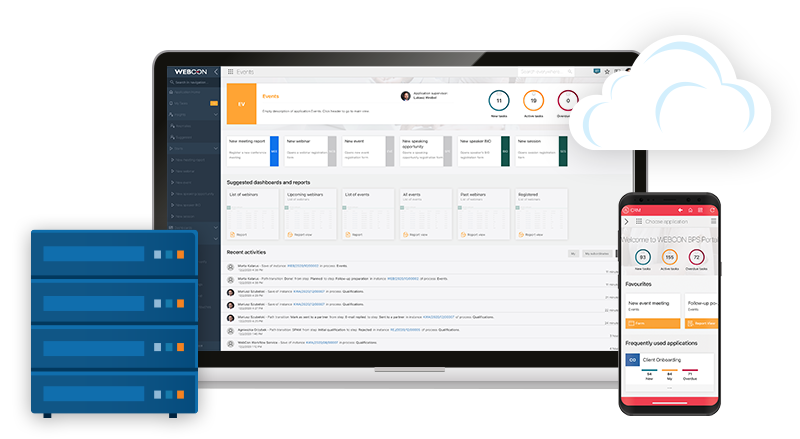

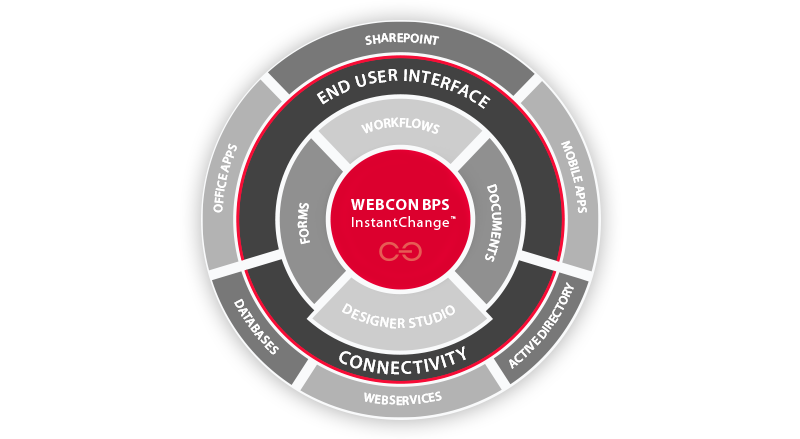

The end of fragile applications
Here’s the fun part: in WEBCON BPS, they’re all different faces of a single thing. The forms are a window into the current state of the workflow. The data schema tells the forms what they need to do. Lookup fields can reference a catalog of already-configured data sources. There are business rules governing, well, everything. Reports know about current status and form content. Change audit trails keep track of everything, not just documents.
No process left behind when you need to make a change
WEBCON BPS is better than that. At every step in a process, a running instance checks the model to see what should happen next. Change the model, the running instances change their path. The forms change their behavior. The data changes its schema. The reports change their appearance.
The model implemented by WEBCON’s InstantChange™ technology is rare – and incredibly useful when you have processes that won’t stand still.
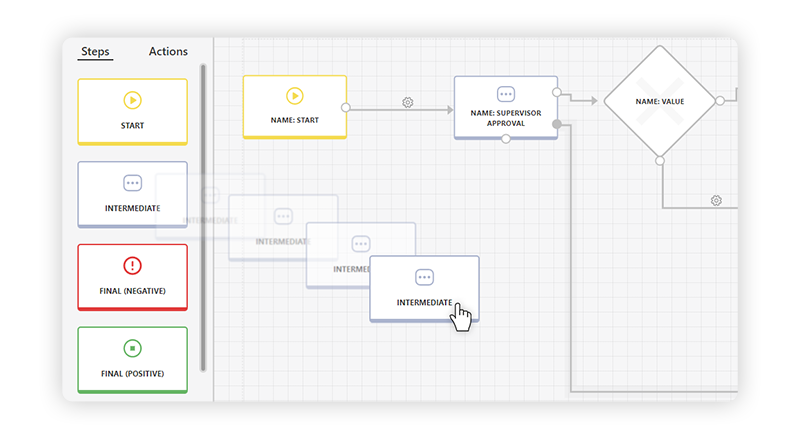

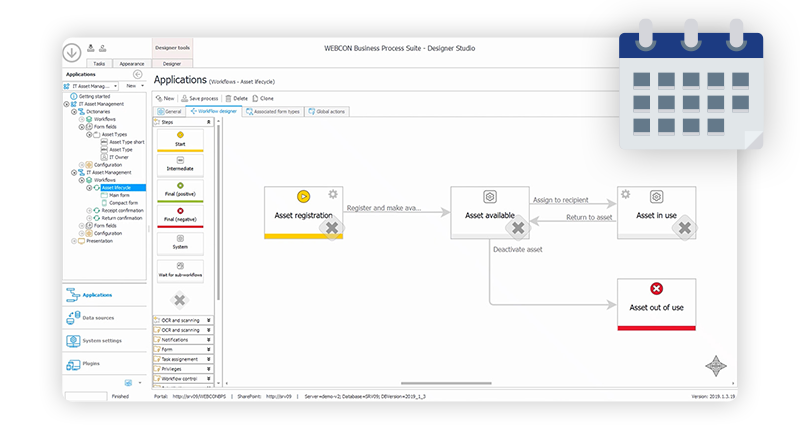

Processes that run as long as you need
Professionals and stakeholders working together
With WEBCON’s Designer Desk, stakeholders create the initial specifications in the form of a functioning prototype. When professionals pick that up and carry it forward, the ongoing work is familiar. With InstantChange™, the effort and time needed to react to feedback is microscopic.
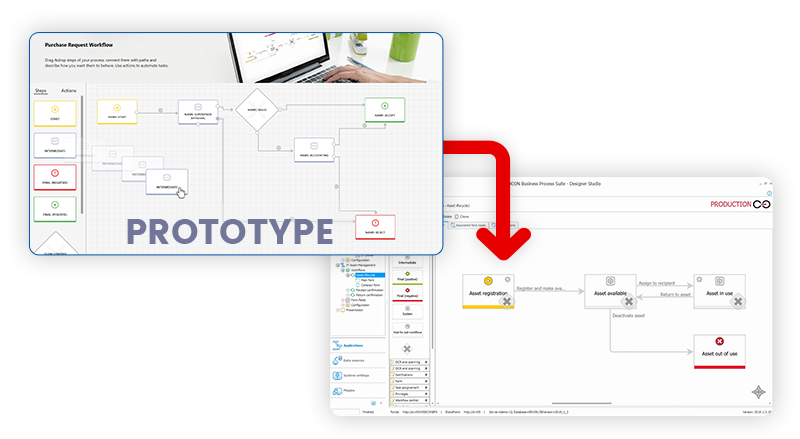

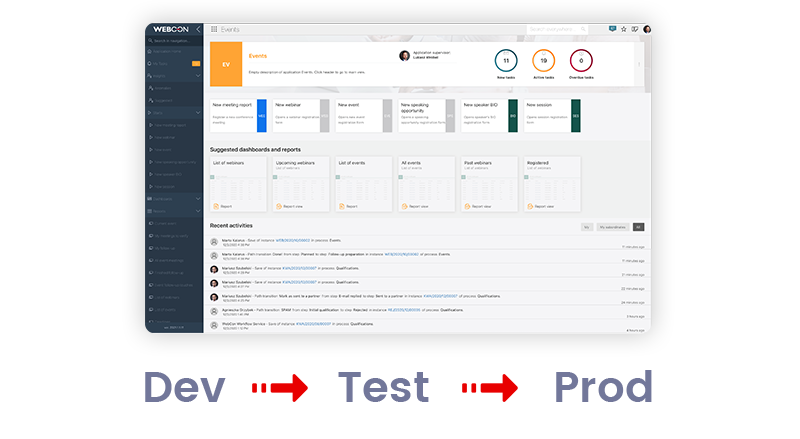

Deployment lifecycle support
You can even define dependencies into your applications when you want them to behave differently between development, testing, and production, too.
Process mapping and workflow diagramming aren’t two separate things
Good luck explaining that to your business stakeholders. They’d need training and reference guides just to be able to follow along.
That’s why some companies pivot to process mapping. In other words, a higher-level, business-friendly diagram that’ll be used to (sometimes automatically) generate that program flowchart-style automation diagram that does the actual work.
The dirty secret is that the relationship between abstract map and real flowchart is one-way. If you modify the flowchart, the relationship is broken. And you have to modify the flowchart, because the map can’t describe everything.
WEBCON BPS is different. There’s one model that does double duty. At face value, it’s an easy map of the steps (or stages) in a process and the paths that can be followed to move between them. One level deeper, and everything that happens when you enter/exit/move between steps is there to be configured – and reconfigured when needed
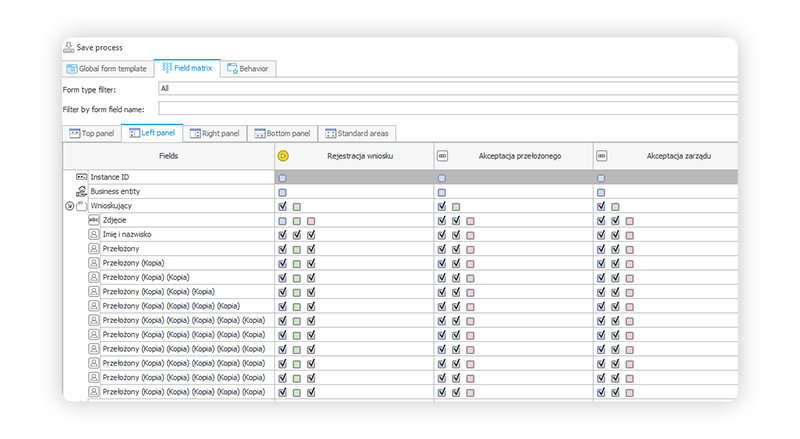

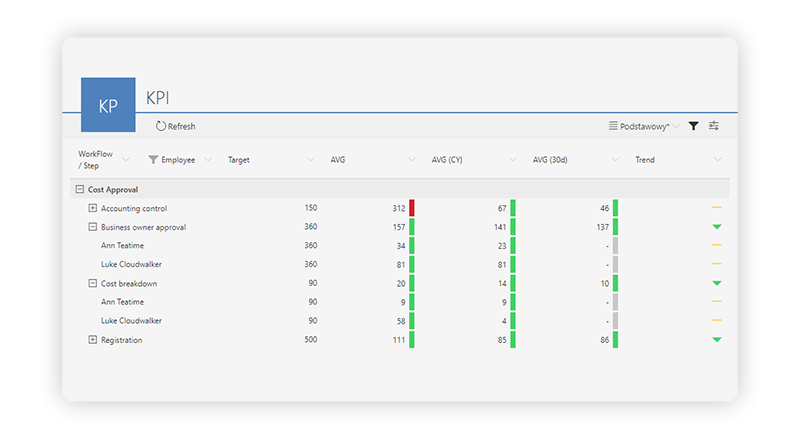

Auditing and analytics without extra effort
Wouldn’t it be nice if the workflow model assumed it would be reported on? That it provided metrics automatically? And that it had room for you to easily add extra metrics to measure without making the project more complicated? We thought so – and we made it so.
The end of analysis paralysis
WEBCON BPS changes that. By making the cost of change low and effort to evolve easy, you can start with an imperfect first try and immediately follow it up with a series of improvements based on feedback. Improvement cycles can be measured in hours, sometimes even minutes.
And since most people have an easier time critiquing than imagining, you not only get faster results – you get better results, too.
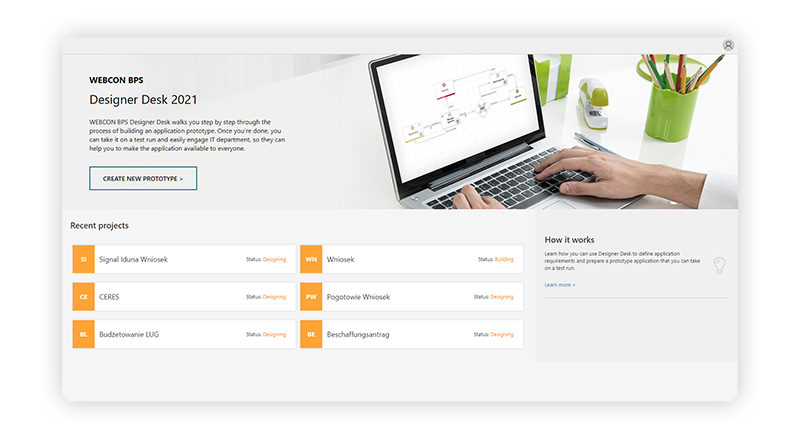

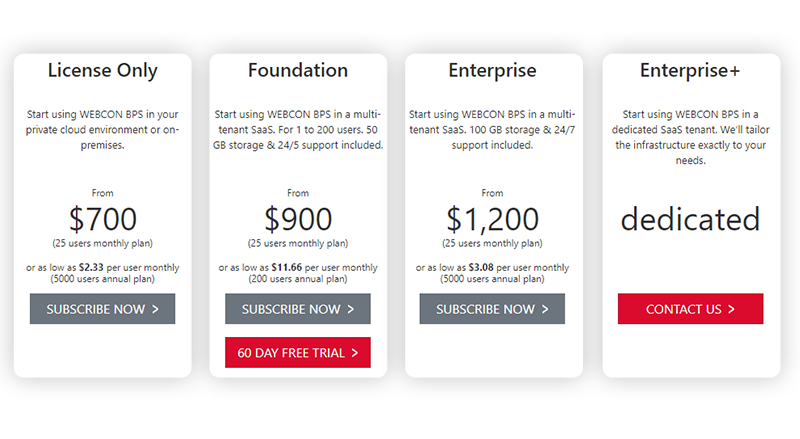

One simple subscription (or purchase)
See WEBCON BPS in action:
At WEBCON, digital transformation isn’t a buzzword – it’s a way of life; it’s about reducing steps, eliminating mistakes, ensuring compliance, connecting assets, and encouraging continuous improvement. Applications made with WEBCON BPS are scalable, process-centric, low-to-no-code, equally at home online or on-premises, and happily used on both desktops and mobile devices. WEBCON’s unique InstantChange™ technology lets customers adapt/evolve processes to address changing needs immediately and painlessly. WEBCON processes are clearly understood and easily governed, and they can be connected to line of business systems, documents, forms, messages, and collaboration workspaces.
Contact us
WEBCON North America
WEBCON Europe
Privacy Policy | © WEBCON 2022 All rights reserved.


